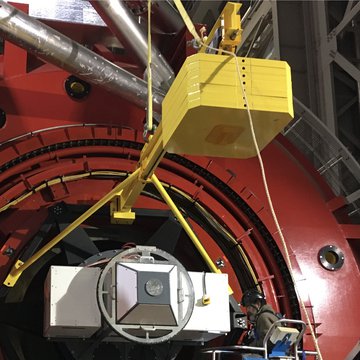High-resolution Spectroscopy and Polarimetry

High-resolution spectrographs are becoming more and more important as they allow quantitative observations of extrasolar planets and their central stars. Especially the search and characterization of Earth-like planets requires stabilized, high-resolution spectrographs at the largest available telescopes. Such instruments are also used to study many types of point sources - stars, quasars, etc., their chemical composition and their evolution over time. They can also be used to check fundamental physical constants such as the fine structure constant and the electron-proton mass ratio. Therefore, the availability of such instruments at the world's largest telescopes is the key to study increasingly faint targets, whereas the use at smaller telescopes allows long time series studies.
Precise wavelength calibration using a laser frequency comb has been reserved for a few instruments due to the high technical and financial effort required for their construction and operation. Slightly reduced requirements can make this high-precision calibration for smaller telescopes, such as STELLA, possible.
Until recently, high-resolution spectroscopy of polarized light was almost exclusively a field of solar physics. With the advent of large telescopes, such as the LBT, together with intelligent data processing methods, high-resolution spectropolarimetry became accessible to stars beyond the Sun.
These projects have been completed or are in the works:
- Operation of the PEPSI spectrograph and the two polarimeters at the LBT.
- Development and maintenance of a general, high-precision spectroscopic data reduction software,
- Automated operation of a precise wavelength calibration light source for SES-VIS (Fabry-Perot interferometer, laser frequency comb),
- Implementation of the 2nd generation instrument program at STELLA (3 SES modules: H&K, VIS, IR),
- Construction of the UBV spectrograph module for the ELT as part of the HIRES project